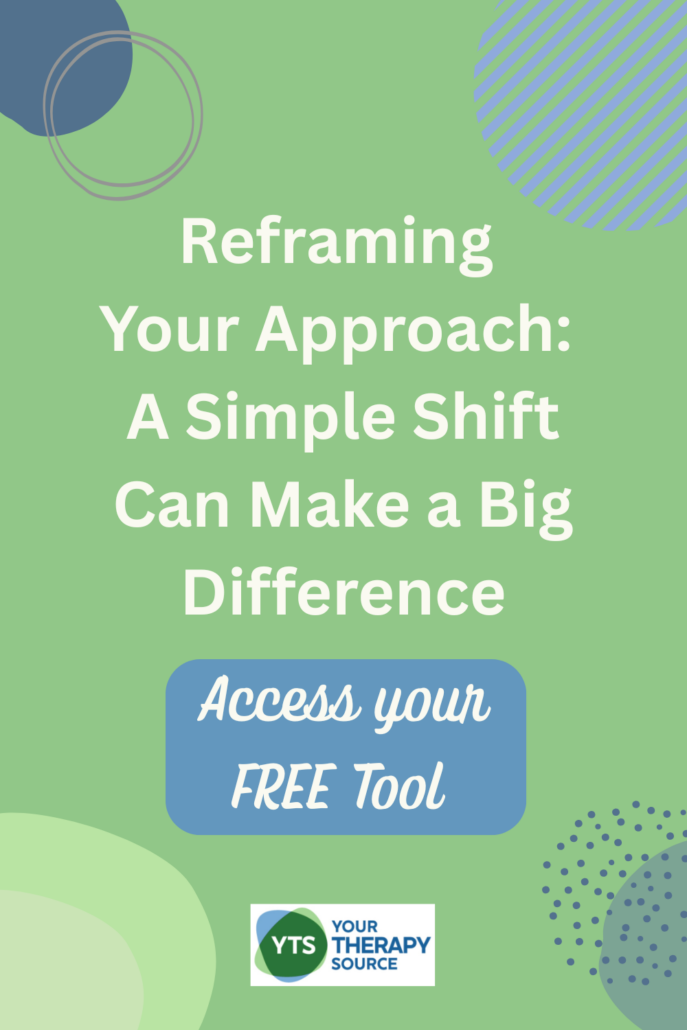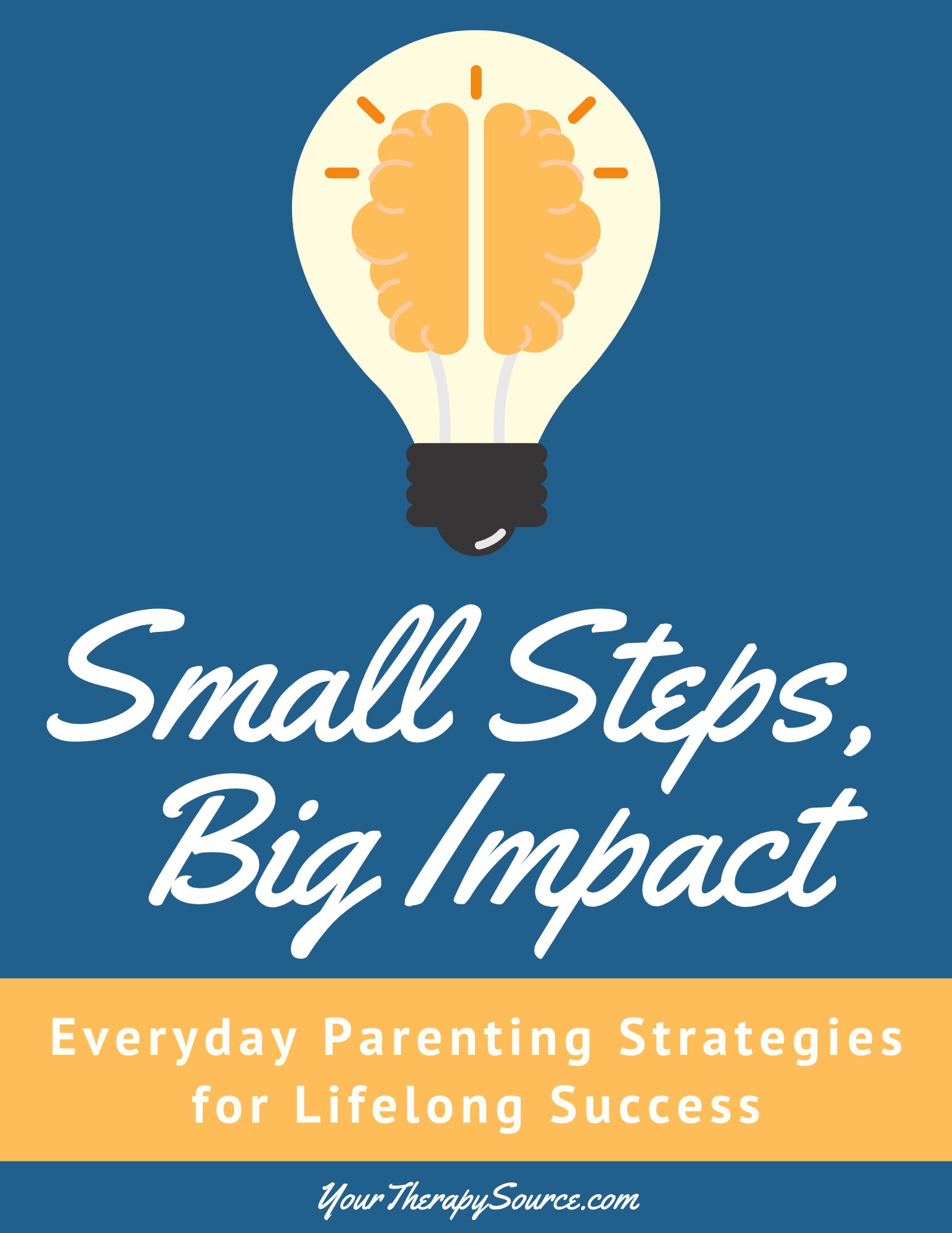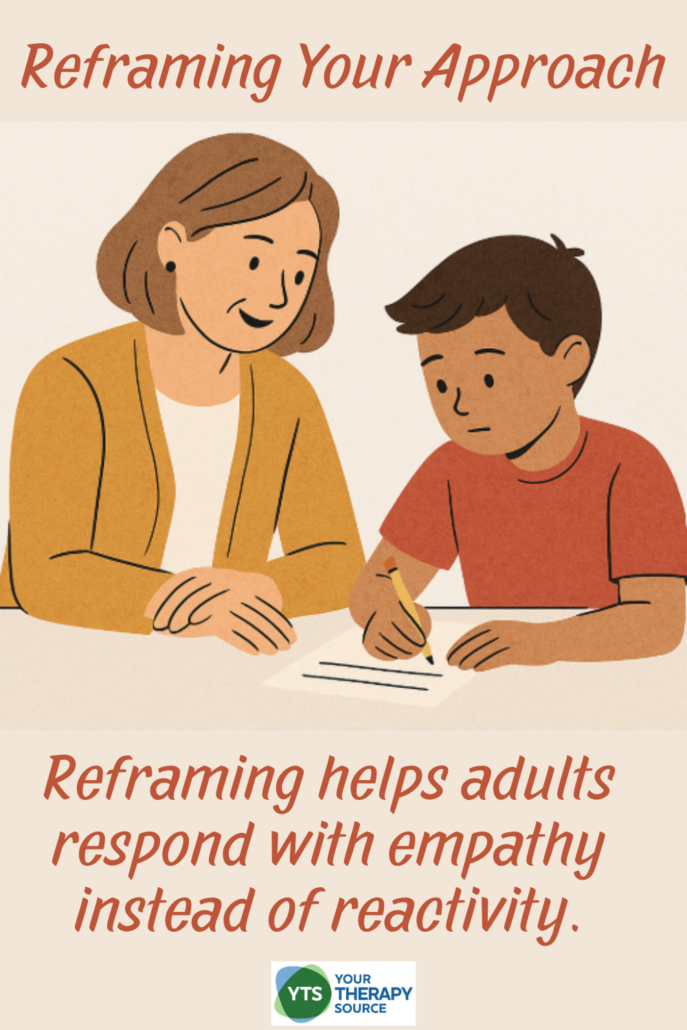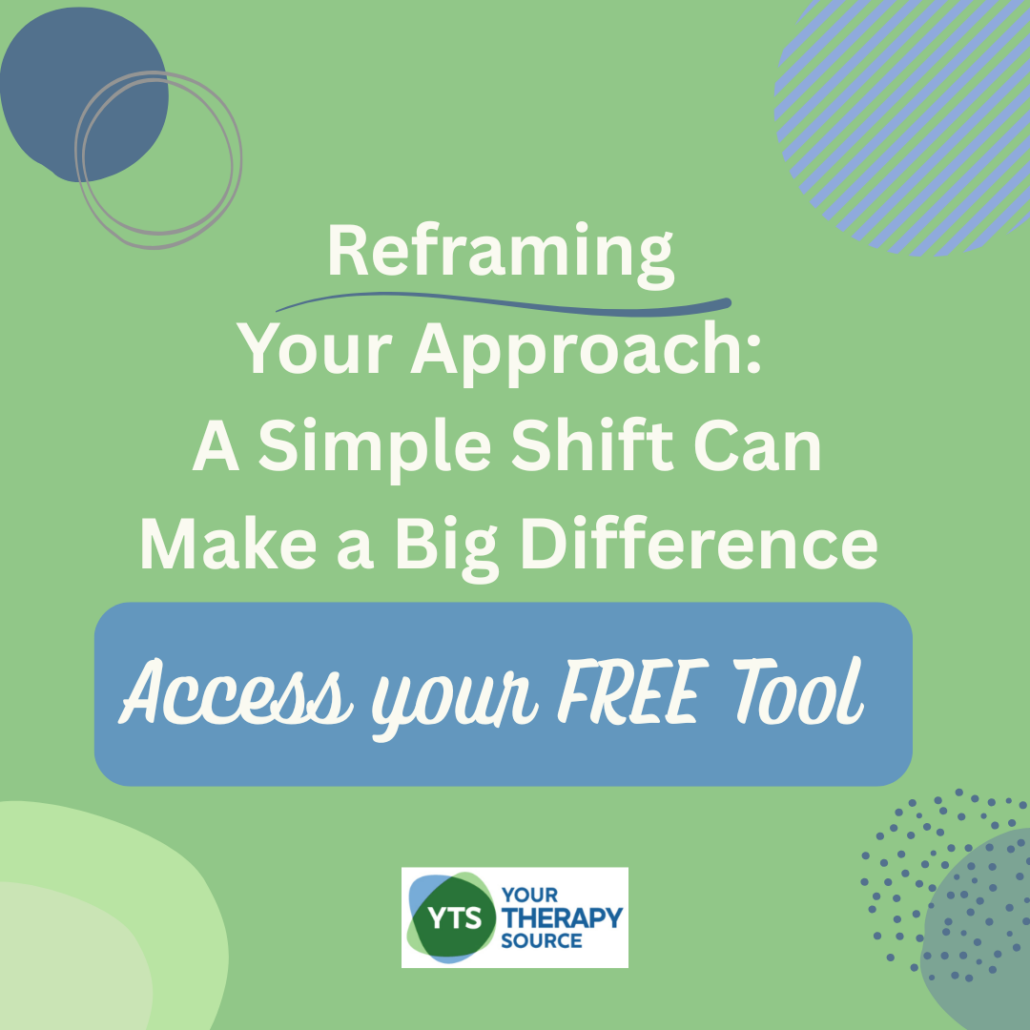Reframe Your Approach: A Simple Shift That Can Make a Big Difference
Working with children—whether in the classroom, therapy room, or at home—comes with both beautiful moments and real challenges. And when behaviors escalate or nothing seems to work, it’s easy to feel stuck. But sometimes, the most meaningful change doesn’t come from a new reward system or behavior chart. It comes from reframing your perspective and approach. You can get suggestions to help you reframe your approach with a free tool to help you get started!
You can access a FREE TOOL to help you reframe your approach at the bottom of this post.

Why Reframing Matters
Reframing isn’t about pretending everything is okay or ignoring real struggles. It’s about shifting the way we interpret a child’s behavior so we can respond in a more effective, compassionate way.
Instead of:
“She’s just trying to push my buttons.”
Try: “She might be testing for safety and consistency.”
Instead of:
“He doesn’t care.”
Try: “He might feel overwhelmed and doesn’t know how to ask for help.”
This kind of shift can open the door to deeper understanding—and more success for both the adult and the child.
It Doesn’t Mean You’re Doing It Wrong When You Reframe Your Approach
Feeling stuck or frustrated doesn’t mean you’re failing. In fact, noticing that something isn’t working is a powerful first step. Just like adults adjust their environment to stay focused or calm—turning off phone notifications, putting on music, or changing locations—kids often need flexibility in how adults approach them too.
Reframing helps uncover what might really be going on beneath the surface. You might find the shift surprisingly simple, but small changes in how we think, speak, or respond can lead to big breakthroughs.
What the Reframe Your Approach Tool in Action

Small Steps, Big Impact: EBook
The Power of Words
The language adults use—both in thoughts and spoken out loud—can shape how children see themselves. It can either build safety and trust or contribute to stress and disconnection. When behavior is seen as communication rather than defiance or disrespect, it becomes easier to support skill-building, co-regulation, and connection.
The goal isn’t to overanalyze everything in the moment. It’s about giving yourself space to pause and consider a new possibility, even briefly. Here are a few examples of how reframing has helped adults shift their approach and support children more effectively.

Example 1 Reframe Your Approach: A Teacher’s Reframe Sparked Connection
In one classroom, a teacher grew increasingly frustrated with a student who constantly got up during work time, distracted others, and seemed to ignore directions. The behavior was seen as attention-seeking and disrespectful.
But when the teacher reframed her thinking—considering that the student might be feeling overwhelmed or unsure how to start the task—she changed her approach. A standing desk, a movement option, and a small checklist were added.
With these adjustments, the student became more engaged and less disruptive. The change wasn’t in the student alone—it started with the adult seeing the behavior as communication.
Example 2: An Occupational Therapy Reframe Opened the Door
During an occupational therapy consultation, a young student frequently shut down during fine motor tasks—pushing materials away or hiding under the table. Some described it as defiance or lack of effort.
Through a reframing lens, the behavior was considered a possible stress response linked to the student’s nervous system. What looked like defiance could actually be a fight-or-flight reaction, triggered by tasks that felt too difficult or overwhelming. The therapist introduced choices, such as using markers instead of pencils, added playful strengthening activities, and created a more supportive setup.
Over time, the student became more willing to participate. A small shift in how the behavior was viewed led to a more regulated, confident child.
Example 3: A Parent Reframed the Evening Routine
A parent struggled with frequent meltdowns during the evening routine, especially when it came to brushing teeth and getting ready for bed. The child was labeled as overly dramatic and uncooperative.
But the parent began to consider the behavior as difficulty with transitions and winding down. Instead of issuing instructions from across the room, they sat beside the child, used a visual schedule, and added a short breathing game to ease the process.
The meltdowns didn’t disappear completely, but they became far less intense—and the routine became smoother. The simple shift in the adult’s approach created a more connected and manageable evening for both of them.
Want Help Reframing? Get Access to this FREE TOOL to Reframe Your Approach
If you’re feeling stuck or just want to explore a fresh perspective, a simple tool is now available to help. This AI-powered resource offers quick, compassionate reframes and supportive language you can use with students or children—without needing to explain everything or share personal details. It’s not therapy. It’s not about judgment. It’s just one way to take a breath, shift your thinking, and try again. Get instant access to this AI tool that helps you reframe your thoughts and language to support students with compassion and intention.



